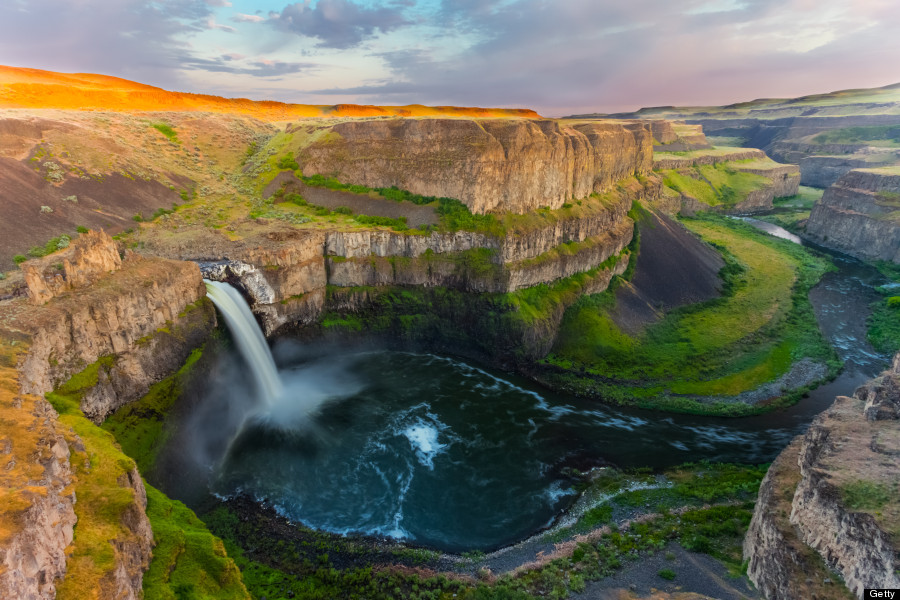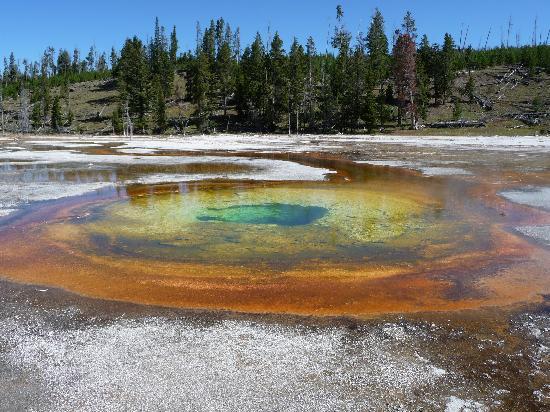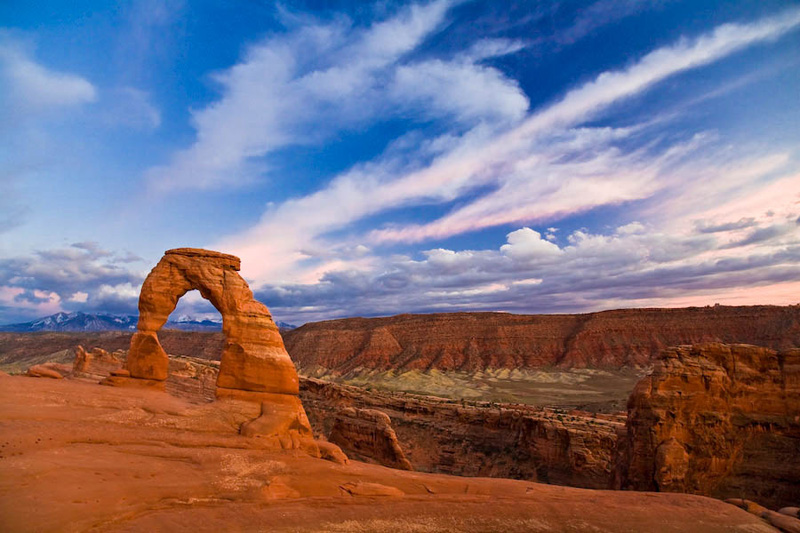
Yellowstone, the oldest national park in the world (1872), is a large volcanic caldera that concentrates endless geothermal phenomena, two-thirds of the geysers in the world and numerous hot springs. In addition, the tour of the five regions discovers that is home to black and grizzly bears, coyotes, wolves, moose and deer or wapiti Canadians, as well as herds of bison.
Located between the states of Wyoming, Montana and a small portion of Idaho, Yellowstone covers almost 9,000 square kilometers more than the Community of Madrid, and has five entries. By accessing reaches South Grant Village, town with all services installed on Lake Yellowstone. The park’s geological wealth begins to manifest shortly after leaving westbound Grant Village in West Thumb minicaldera Pool. Despite being one of the smallest in the park, contains hot springs, boiling mud pools, geysers and fumaroles.
The road leading to Old Faithful Geyser crosses Country region, which are located 180 of the 300 geysers of booking. Several trails run between these sources that spew hot water columns, with the geyser Old Faihtful as very attractive by how high, between 30 and 60 meters.

On the way to Madison, the information center of the west entrance, the road passes by an essential place: Grand Prismatic, thermal lagoon measures 112 meters in diameter and whose dimensions gave rise to the British writer Ruydard Kipling to describe it as «infernal «in 1889. Its deployment is the most hypnotic colors: turquoise water surrounded by a ring of ocher ranging from yellow to orange.
Somewhat later you get to Madison. It’s a good place to stay, but actually the whole book has numerous options, from camping, cabins and luxurious hotels, to camping in the mountains if you make a trekking and requesting permission. Penetrate deep inside of Yellowstone is a feasible challenge for most, although it is advisable to go with a guide as you may not cross with anyone for days, even in high season. The rules are clear: no need to trace and communicate the plan is mandatory trip to the guards (rangers). One of the most exciting trekking routes is that in six days the approaches to the base of Electric Peak (3,378 m) and then enters the Bear Country through the path Sportsman Lake Trail to Sportsman Lake camp.
The Canyon Village center in the heart of the park, appears after traveling 42 miles from Madison. In this sector the great attraction are the Lower Falls and Great Falls, a waterfall of 93 meters which precipitates the Yellowstone river in the middle of a steep canyon.

Of the various viewpoints that overlook this colossal show, Artist Point is the most famous because it is said here Thomas Moran painted watercolors convinced the U.S. Congress to create a national park in 1872. The first news about Yellowstone had come across French-Canadian trappers mid eighteenth century, but more reliable information provided the mapping expedition of Meriwether Lewis and William Clark in 1806.
Roosevelt appears 31 miles north of Canyon Village. The small village is home to an interpretive center and nature historical museum that explains the indigenous roots of Yellowstone, Indian Territory Kiowa, Shoshone-crow and the latter give name to one of the park’s lakes. Fascina imagine those people living surrounded by a fantastic landscape and yet so far, where the warm summers only last two months, while snow and cold, with temperatures down to -40 ° C, remain from November to March.
Roosevelt is located on the road connecting the two North park tickets, and any road you take leads to essential enclaves. To the west are reached pink limestone terraces of Mammoth Hot Springs. And to the east lies the Lamar Valley, an area of meadows and forests with grazing bison, reintroduced a few years ago, and where it is possible to see wolves or any of the big five in North America: the black bear, the grizzly, elk, cougar and lynx. In this final stretch of the trip is confirmed that Yellowstone is one of the most amazing natural sanctuaries in the world, for its geothermal activity, by density of wildlife and its habitat diversity, but there is something that makes it even more special: respect man demonstrated here to nature.






